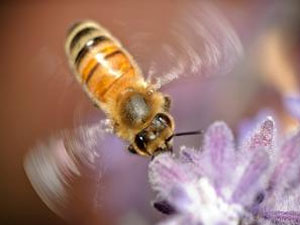《Nature》:国际顶级作者和杂志编辑教您如何更有效的写作和发表论文
时间:2010-12-10 阅读: 我要评论:
《Nature》:国际顶级作者和杂志编辑教您如何更有效的写作和发表论文
本文可谓论文写作和发表经验的精华,国际顶级投稿人、审稿人和编辑从他们各自的角度言简意赅的讲授了论文写作和发表的技巧和要点,读了之后,感觉非常实用,收获颇丰,现将全文小结如下,以便大家学习。
写文章
1. The moral of the story is that the publishing process requires not only hard work but also resilience — and struggling young authors can learn valuable lessons from those who have already navigated that process.
2. You are only as good as your last paper — previous success does not guarantee future acceptance.
3. A key to winning over editors and reviewers is having strong data to support conclusions. Some people don't appreciate the fact that a lot of weak data does not make up for having less, but more powerful, data.
4. Authors should try to resist the urge to let their findings trickle out over many years and many papers.
5. Younger writers need to recognize their own working patterns and write when they are most productive — whether it is early morning, late at night, at a desk or during a walk.
6. Recognizing that writing is a long process is valuable. Find a mentor in that process, somebody to guide and coach you.
7. For many publishing veterans, the writing process starts at the earliest stages of designing a research project.
8. Aspiring writers should have a template to hand — a previous paper published by the lab or a 'near-neighbour' article from the same journal. Paralysed would-be writers should take the template concept one step further by counting the number of paragraphs in each section, the number of figures and the number of references.
9. Start every day of writing by editing the previous day's material — a useful tactic that helps to ease us into a writing mindset.
10. The usual writing advice applies to manuscript writing as well — be clear and concise and use simple language whenever possible.
11. Editors stress the importance of clarity above all else, to help convey arguments and logic to them and to readers.
12. You've got to hook the editor with the abstract.
13. Most writers make the mistake of assuming too much knowledge on the part of their audience.
14. Editors say that one way to identify holes or gaps in logic that would be vulnerable in peer review is to imagine a sceptical audience reading the manuscript. Think of the most adversarial reader you can imagine, and write to substantiate the veracity of your arguments and to anticipate criticisms and answer them.
15. Some editors suggest that 'winning over' a sceptical editor, reader or reviewer should be the ultimate goal of any paper's abstract.
16. Editors read the abstract and start formulating a thumbs-up or thumbs-down, looking for reasons to rip it apart.
17. Authors should avoid an abstract structure that says: we did X, which told us Y, and has implications for Z. Instead, he says, start with why a reader should care about learning more about Z and then explain how this work furthers that goal.
18. The introduction should persuade readers “that you know what you are talking about and have something new to teach them.
19. Authors should clearly distinguish between data in the results section and inferences about what they mean in the discussion section.
20. The introduction need not cite every background article gathered, the results section should not archive every piece of data ever collected, and the discussion is not a treatise on the paper's subject.
21. The writer must be selective, choosing only the references, data points and arguments that bolster the particular question at hand.
22. Once a first draft is complete, the work has only just begun. “Revise and revise and revise.” Even polished authors go through an average of 10–12 drafts, and sometimes as many as 30.
23. Writers should ask not only the principal investigator to view drafts, but also every co-author, as well as fellow students or postdocs, and colleagues outside the immediate field of research. Lead authors should give co-authors set deadlines of 10 days to two weeks to suggest changes. Experienced authors counsel letting the draft sit for a few days before reading it with fresh eyes to catch mistakes or problems in flow. It is better to read drafts aloud with your students to spot errors.
24. Authors should not suggest reviewers who are personal friends or institutional colleagues; including those people could immediately erode the editor's trust. Authors need to find a balance — it is fine to exclude a couple of reviewers who are direct competitors or known naysayers, but restricting too many qualified reviewers can backfire.
25. As an author, your job is to make the editor's job as easy as possible.
选杂志
1. Before starting to write the paper, authors should carefully choose a journal audience for their research story — and initially aim for the highest-impact, highest-profile journal possible. The submission process is fast enough today; it's worth the effort of sending your paper to the highest journals where it belongs.
2. Established authors and journal editors suggest thinking early about the right journal and finding an appropriate editor, the best reviewers and, of course, an appropriate audience of readers.
修稿
1. New authors can feel overwhelmed when the reviewers' comments come back. Wojtal likes to let reviews sit for a week to let his “blood pressure return to normal”.
2. Blumberg advises copying all of the reviewers' comments into a new electronic document to address each one step-by-step.
3. Authors should work through the list and explain how criticisms were addressed, or why they were not, in the resubmission cover letter to the editor.
4. A clear, succinct resubmission letter may result in an editor making their own decision rather than sending the paper back out for another round of review.
5. New authors should be careful to polish their work and respond meticulously and politely to reviewers' comments without getting overwhelmed or frustrated by lengthy, time-consuming queries. Those who follow such advice are more likely to find success. Those who don't could end up on the wrong side of the 'publish or perish' divide.
6. The worst thing an author can do is to ignore a reviewer's criticism and send it back without an explanation. This wastes an editor's time trying to resolve the issue on his or her own.
7. “If you strongly believe the reviewers have erred and that the editor should hear from you, definitely send an e-mail,” says Blumberg, who, as an editor, is happy to hear from authors. “Be as polite as possible, stick to the facts, and keep it to the point.”
结束语
Young scientists would be wise to embrace written communication as the foundation of an academic career and the key to earning tenure, winning funding and, ultimately, sustaining a research programme, says Hauber. “If your result is not published, you haven't done anything,” he says. “You might not set out to be an enthusiastic writer, but you should try to learn to love it.”
原文地址:
http://www.nature.com/naturejobs/2010/101014/full/nj7317-873a.html
| 《Science》:中国存在严重的SCI论文买卖问题 |
| “僵尸论文”中埋葬的美丽年华 |
| 美国冷泉港实验室(CSHL)正式开通生命科学预印本网站BioRxiv |
| Elsevieri旗下能源类期刊SCI影响因子(JCR IF) |
| SCI期刊Microbiological Research特刊征稿 |
| 2013年EI收录中国期刊目录 |
特别声明:本文转载仅仅是出于传播信息的需要,版权归原作者所有,并不意味着代表本网站观点或证实其内容的真实性; 如其他媒体、网站或个人从本网站转载使用,须保留本网站注明的“来源”,并自负版权等法律责任; 作者如果不希望被转载或者联系转载稿费等事宜,请与我们接洽:service#environmentor.cn(请将#改为@)。
来源:环境人 作者:Environmentor (环境人 Environmentor.Cn)





